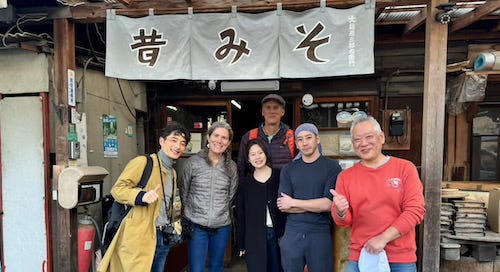This tour was organized by my dear friend Midori Uehara and Nakaji Minami who runs Koji School, and joined by koji students Miyuki and Minami. (Pictured at the end of post at a beautiful lunch.)
Yesterday
A few days ago
Over a week
Almost two weeks ago we visited Umai Miso, a 200-old-miso factory in Tokyo, one of only eight left in this metropolitan area…
Keep reading with a 7-day free trial
Subscribe to Fermenting Change to keep reading this post and get 7 days of free access to the full post archives.




